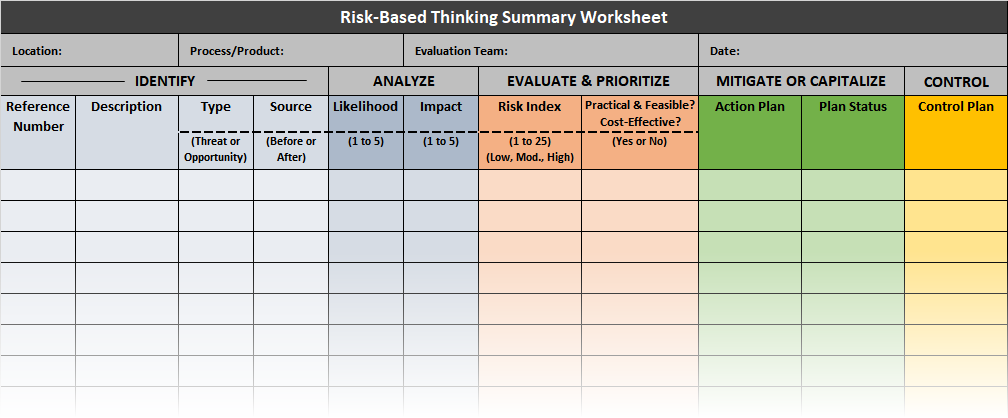Resource Centers
Risk-Based Thinking Summary Worksheet
Here is an example of a Risk-Based Thinking Summary Worksheet.

Identify
- Use a Reference Number to help keep track of risks.
- The Description summarizes the risk potential.
- The Type is either a Threat or OPPORTUNITY.
- The Source is either BEFORE a risk occurs or AFTER it happens.
Analyze
- The greater the likelihood and more severe the impact, the higher the rating.
- The likelihood is often rated on either an event-based scale or a time-based scale.
- The greatest impact may be on quality, finances, safety or the environmental.
Evaluate & Prioritize
- Calculate the relative RISK INDEX by multiplying the likelihood rating times the impact
- A RISK INDEX can have a range from a high of 25 to a low of 1. Generally, the higher the RISK INDEX, the greater the potential threat or opportunity.
- Prioritize risks as a high, moderate or low
- Evaluate whether the potential solutions considered for mitigating threats are practical & feasible or cost-effective for opportunities.
Mitigate or Capitalize
- Consider elimination and reduction approaches for threats such as Inherent Process Events, Natural Hazards and Technological Events and Willful or Intentional Misconduct.
- Potential paths for projects to tackle opportunities include optimizing products/processes, revamping underperforming assets, entering new markets and introducing new products.
Control
- Use “Control Mechanisms” to make sure measures are in place that track performance to ensure improvements made continue to work as expected.


